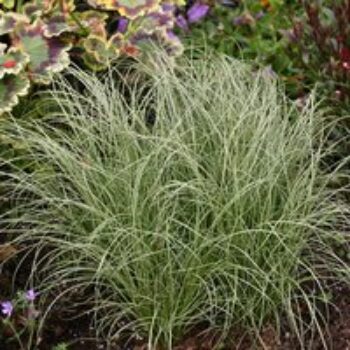A
group
of
perennial
dusty
miller
(Centaurea
cineraria)
plants
developed
interveinal
chlorosis
on
the
older
leaves.
The
initial
assessment
suggested
that
magnesium
(Mg)
deficiency
was
the
cause
because
we
don’t
have
naturally
occurring
Mg
in
our
irrigation
water.
Tissue
analysis
proved
otherwise.
Centaurea
cineraria
‘Colchester
White’
is
a
perennial
dusty
miller
that
adds
a
nice
white
textured
leaf
pattern
to
gardens.
While
visiting
a
greenhouse
recently,
the
grower
asked
about
their
crop.
Overall
the
plants
looked
good,
but
the
lower
leaves
had
developed
interveinal
chlorosis.
Because
our
bedrock
is
granite
and
the
surface
water
is
the
main
irrigation
source,
it
lacks
a
nutritional
punch.
If
you
want
to
provide
calcium
(Ca)
or
magnesium
(Mg),
you
have
to
include
it
in
your
fertilization
program.
The
need
to
add
supplemental
Mg
results
in
frequent
instances
of
Mg
deficiency
appearing
late
in
the
production
season
once
the
supply
from
the
dolomitic
limestone
runs
low.
Therefore,
it
is
a
pretty
safe
bet
when
one
observes
lower
leaf
interveinal
chlorosis,
that
it
is
a
Mg
deficiency.
Read
more
at
e-gro.org








